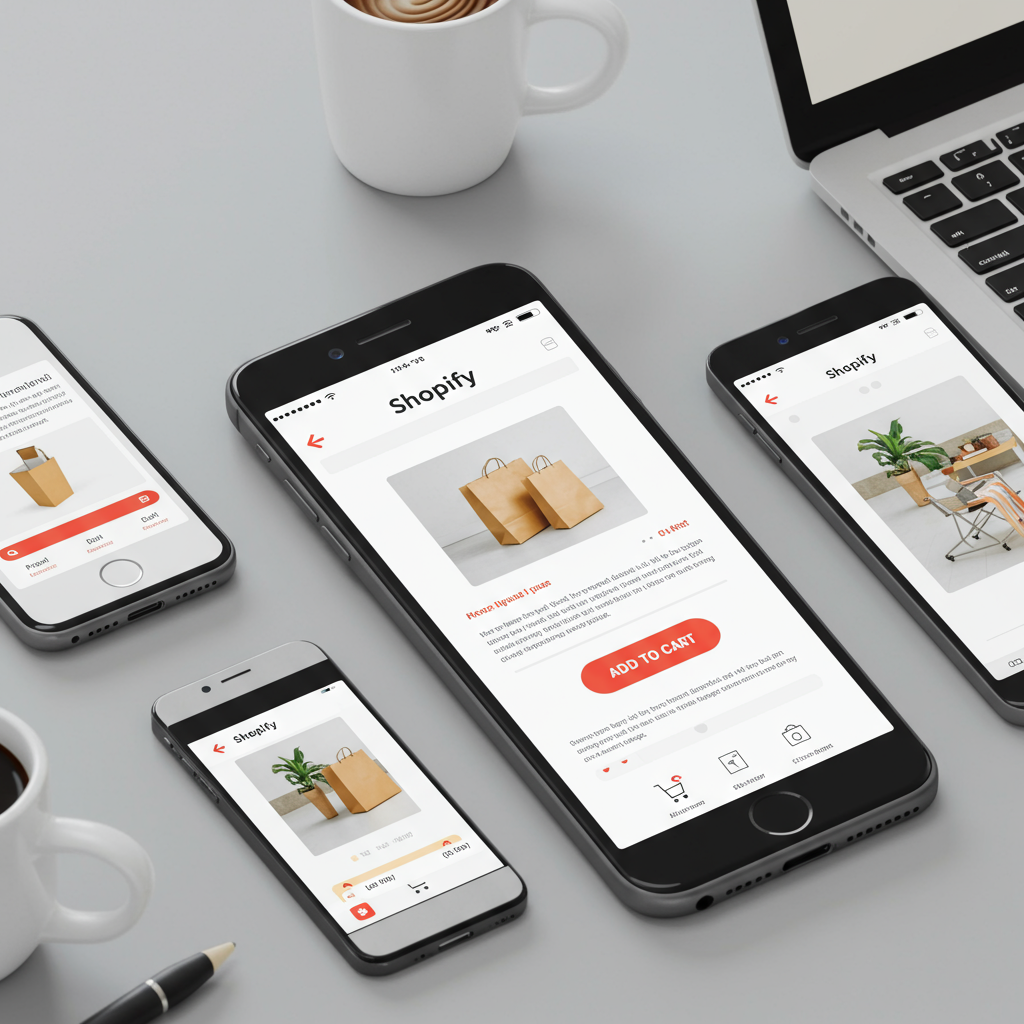Unlocking Mobile Conversions for Your E-commerce Business
As a Shopify merchant, I’ve seen firsthand how crucial it is to meet your customers where they are. And these days, that’s overwhelmingly on their mobile devices.
The world has gone mobile, and your online store needs to keep pace. It’s no longer enough to just have a website; it needs to be impeccably designed for the small screen.
Consider this: over half of all e-commerce traffic now comes from mobile devices. If your Shopify store isn’t optimized for these users, you’re essentially leaving money on the table.
A clunky, slow, or hard-to-navigate mobile experience will send potential customers straight to your competitors.
That’s why I advocate for a mobile-first design strategy. It’s not just a buzzword; it’s a fundamental shift in how we approach online retail.
What does ‘mobile-first’ truly mean? It’s not just about making your desktop site shrink to fit a phone screen.
Instead, it’s about designing for the smallest screen first, prioritizing content and functionality, and then scaling up for larger displays.
This approach forces you to be ruthless about what’s essential, leading to a cleaner, faster, and more intuitive experience for everyone.
One of the core principles of mobile-first design is content prioritization. On a small screen, every pixel counts.
You need to identify your core message, your most important products, and your essential calls-to-action, and make them immediately accessible.
Another critical aspect is speed. Mobile users are notoriously impatient. If your site takes more than a few seconds to load, they’re gone.
To achieve this, I focus on optimizing images, leveraging browser caching, and minimizing unnecessary code.
Your choice of Shopify theme is absolutely crucial here. Always select a theme that is inherently responsive and built with mobile performance in mind.
Many modern Shopify themes are designed with a mobile-first philosophy, offering excellent performance and user experience out of the box.
I always recommend testing theme demos on your own phone before committing. Navigate through it as if you were a customer.
Image optimization is non-negotiable. High-resolution images are great for showcasing products, but not at the expense of load times.
While Shopify often handles some image optimization automatically, I still recommend compressing your images before uploading them.
Tools like TinyPNG or Compressor.io can significantly reduce file sizes without sacrificing visual quality.
Mobile navigation needs to be intuitive and effortless. The ubiquitous hamburger menu is your friend for tucking away secondary navigation links.
Ensure your primary navigation elements are clear, concise, and easy to tap with a thumb.
Your call-to-action (CTA) buttons are vital. Make them large enough to be easily tappable, with clear, actionable text.
Product pages are conversion hotspots. Keep product descriptions concise and scannable, highlighting key benefits and features.
Use high-quality, zoomable product photos that showcase your items from multiple angles.
Make the ‘Add to Cart’ button prominent and easy to find, ideally ‘above the fold’ on the mobile screen.
The checkout process is where many potential sales are lost due to friction. Streamline it as much as possible.
Offer guest checkout options, enable autofill for forms, and integrate popular mobile payment options like Shop Pay, Apple Pay, or Google Pay.
I can’t stress this enough: test, test, test. Don’t just assume your store looks good on mobile.
Test it on various devices, screen sizes, and operating systems. Use Shopify’s theme customizer preview, but also real devices.
Explore Shopify’s App Store for mobile optimization tools. There are apps for image compression, speed optimization, and even mobile-specific pop-ups.
Don’t forget accessibility. Ensure sufficient color contrast, readable font sizes, and proper spacing between elements.
This not only helps users with disabilities but improves the experience for everyone.
Once your mobile-first store is live, monitor its performance. Use Shopify Analytics and Google Analytics to track mobile traffic, bounce rates, and conversion rates.
Continuously iterate based on user behavior and feedback. A mobile-first strategy is an ongoing process, not a one-time fix.
What are your biggest challenges when optimizing your Shopify store for mobile? I’d love to hear your thoughts.
Embracing a mobile-first approach isn’t just a trend; it’s a fundamental shift that will significantly impact your sales and customer satisfaction.
By prioritizing the mobile experience, you’re building a more resilient, faster, and more user-friendly store for all your customers.
Start optimizing today, and watch your mobile conversions soar. Your customers (and your bottom line) will thank you for it.






